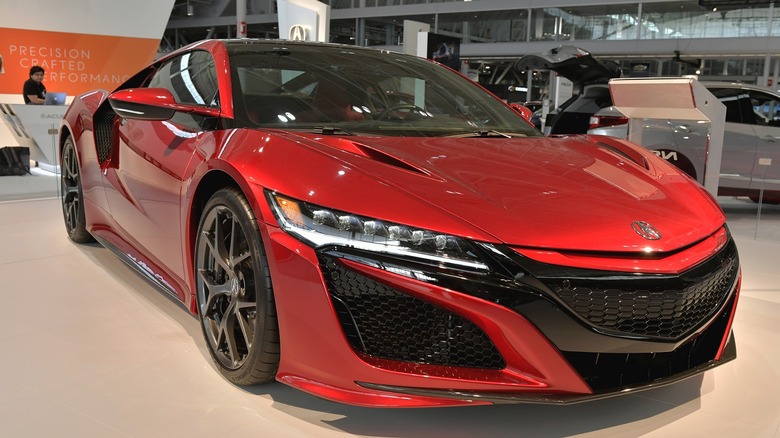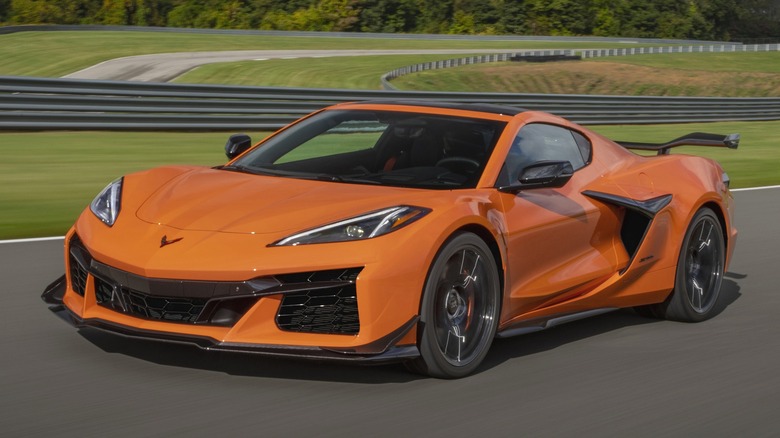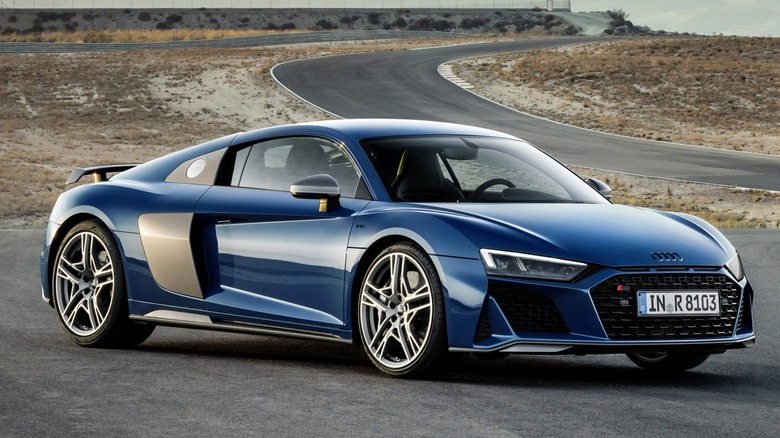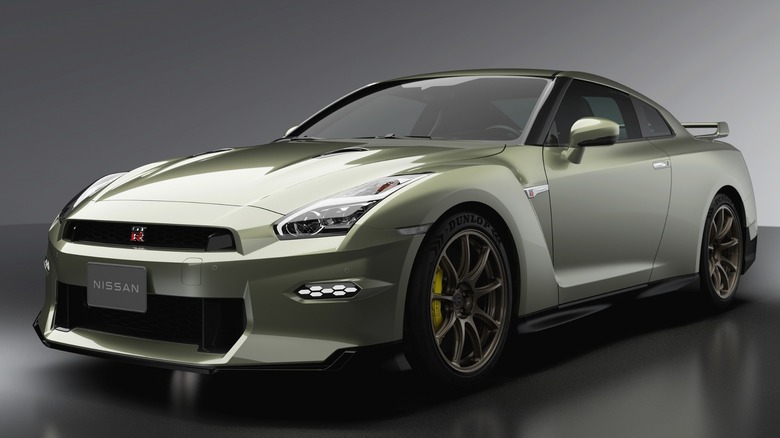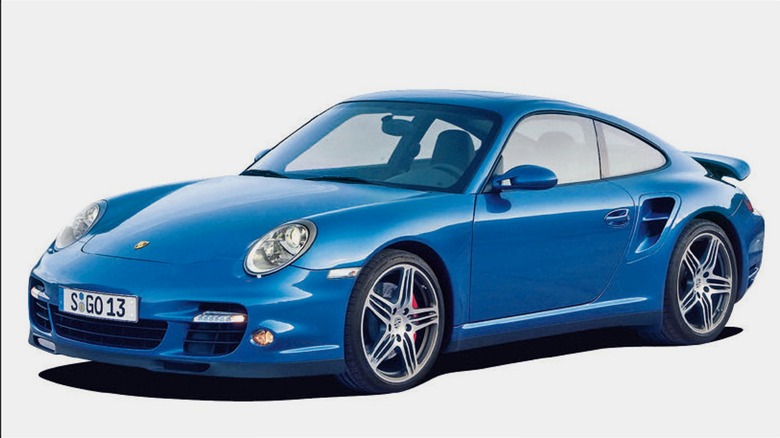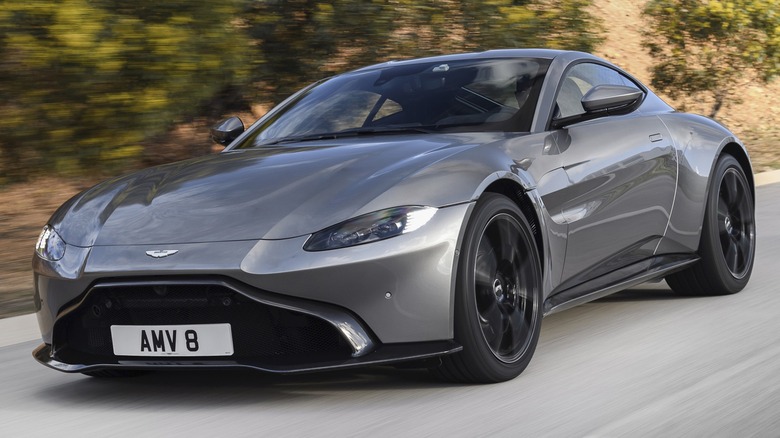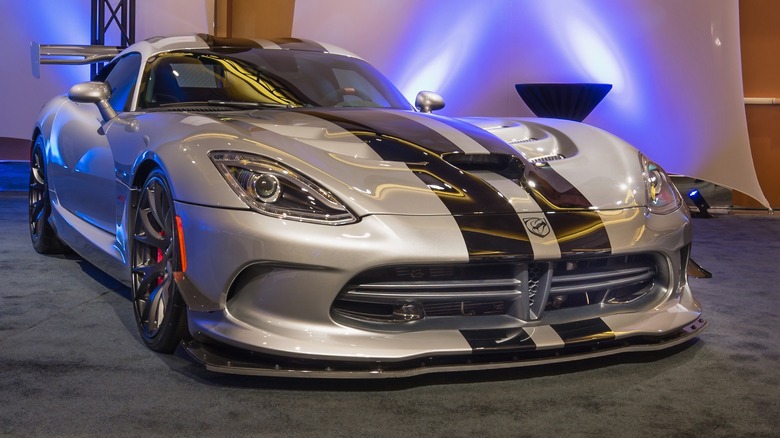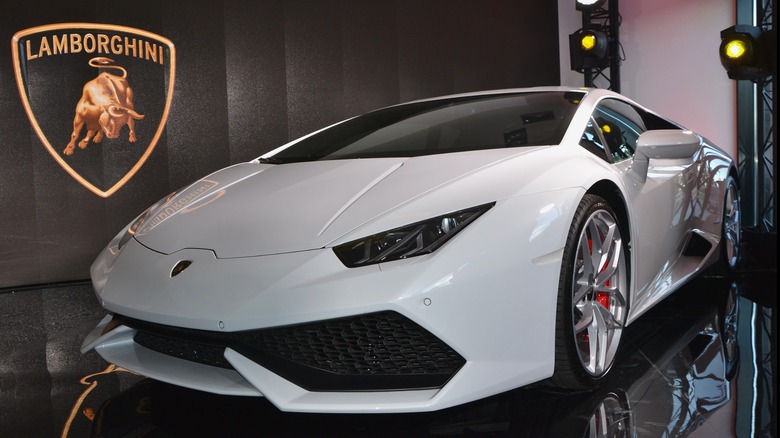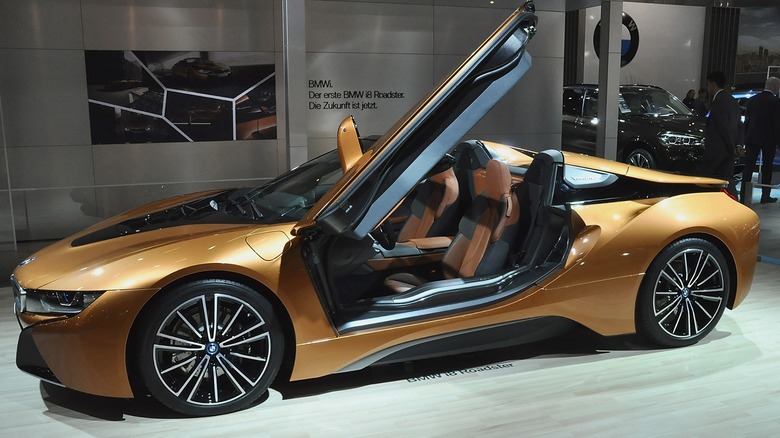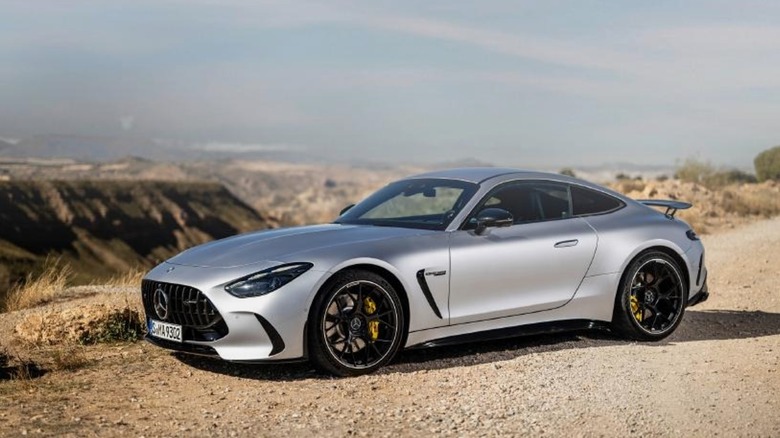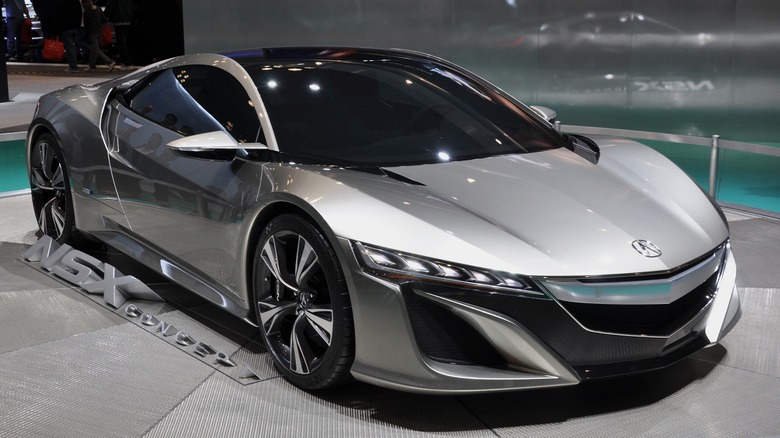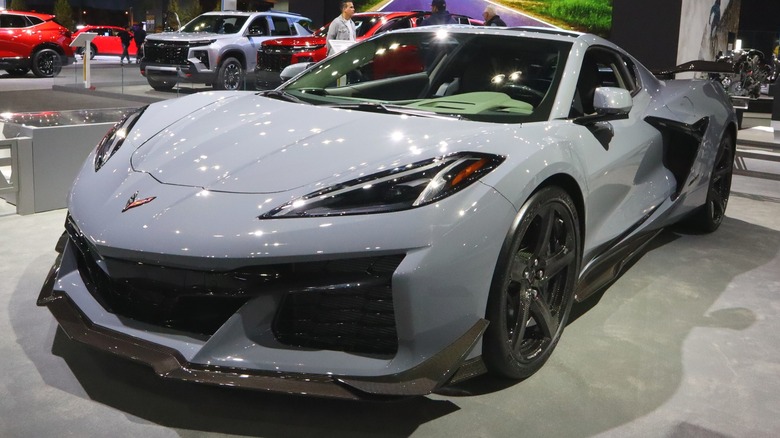X Supercars That Are Unexpectedly Cheap To Maintain
When most people think of supercars, what comes to mind is speed, stunning looks, and a hefty maintenance bill. And fair enough — some brands have earned that reputation already, with annual service costs creeping toward 30% of the car's value. As Arvaan Joshi from Super Car Club India puts it, "Nowadays, service centers for supercar brands do not repair but replace parts. Costs can go up exponentially. If you only consider non-accidental damage like wear and tear, owners are often looking at maintenance costs of about 5 to 10 percent of the purchase price, just in the first year itself."
Yes, that's true, but still, that's not always the case. Not all supercars come with the financial drama. In fact, a few defy that stereotype, pairing thrilling performance with service costs that are surprisingly cheap. In other words, it's safe to say that there's really no excuse for you to skip maintenance — just choose a car that plays fair.
Because skipping routine service? That's how performance fades, components wear faster, and resale value dips. Plus, upkeep on the wrong car can feel just as extreme as the drive itself, whether it is the constant shop stops or expensive part swaps. But with the right pick, you're looking at scheduled services that make sense — not surprise repairs that would ruin the fun. So without further ado, these are the fast cars that are cheap to maintain.
Chevrolet Corvette Z06 (C8)
Let's start with this one from Chevrolet. It's not often you hear supercar and cheap maintenance in the same breath, but the Chevrolet Corvette Z06 (C8) breaks that mold with confidence. With its naturally aspirated 5.5-liter flat-plane crank V8 and race-ready hardware that screams to 8,600 rpm and delivers over 670 horsepower, it's every bit of a high-performance machine. But unlike its European counterparts, the Z06 doesn't hit you with supercar-sized maintenance bills.
What truly sets the Z06 apart is its cost of ownership. Over a five-year span, owners spend just over $3,272 on maintenance and repair, which is less than what some luxury SUVs demand. Stretch that to 10 years, and CarEdge estimates total service and repair costs at about $9,239 – well below the norm for luxury sports cars. Even more reassuring, the Z06 has only a 21.06% chance of needing a major repair in that time, which is impressively low for a car that plays in this league.
Of course, part of the credit goes to its DNA. Built in the U.S. using GM parts, the Z06 doesn't rely on hard-to-source components or niche technicians. That means more affordable service and easier access to parts, all without giving up its power or handling.
Audi R8
You wouldn't expect a supercar that shares DNA with the Lamborghini Huracán — which is also featured below in this list — to be one of the most reasonable options to maintain, but the Audi R8 has never cared much for expectations. What really seals the deal is its reliability. The R8 has no major problem areas, giving it a strong reputation for dependability — something most supercars can't claim.
In RepairPal's words, owners spend an average of $1,123 per year on maintenance, depending on the R8's year and mileage. CarEdge, on the other hand, places that figure a bit lower, estimating annual costs around $976. All thanks to Audi's shared parts across the Volkswagen family and a wide service network that doesn't demand supercar-level labor rates. Plus, many independent shops are more than capable of handling routine work without the brand-tax markup you'd see with a Ferrari or McLaren.
Also, you still get the thrill of a naturally aspirated 5.2-liter engine and Audi's Quattro AWD system, but without the usual service headaches. Stick to its well-structured maintenance schedule — roughly every 5,000 to 10,000 miles or once a year — and ownership stays straightforward. These annual services typically include diagnostics and oil and filter changes, with oil changes costing around $210 to $267 depending on labor and parts. Even more involved jobs like brake pad and rotor replacements top out at about $1,500, but they're not needed often unless you're pushing the car hard.
Nissan GT-R (R35)
The Nissan GT-R (R35) wears the supercar badge, yes, but it doesn't come with the usual strings attached to most supercars every time they hit the service bay. It delivers twin-turbo V6 power, advanced all-wheel drive, and a track-hardened chassis, and even with all of that, you can still cop one for just less than $200,000. Over a 10-year span, owners typically spend around $9,127 on maintenance and repairs, with only a 17.94% chance of encountering a major issue. And in the first five years, total costs sit near $3,414, which is refreshingly tame for a car with this kind of punch. Of course, it isn't all that perfect. The GT-R's suspension can be a headache. It holds up well into higher mileage, but if problems do come up, they don't come cheap.
What really gives the R35 an edge is Nissan's nationwide GT-R-certified service network. Nearly 500 dealerships across the U.S. have been trained and equipped for all models, keeping things streamlined and stress-free. Scheduled performance inspections at key intervals help ensure nothing gets overlooked. According to RepairPal, average annual maintenance costs hover around $920. Factory parts are readily available, and the service roadmap is clear — no guesswork, no exotic premiums, just straightforward speed and solid reliability.
Porsche 911 Turbo (997)
For a car that punches above its weight on the track, the Porsche 911 Turbo (997) keeps things surprisingly grounded when it comes to maintenance. According to RepairPal, yearly maintenance averages about $1,072, and most of it covers routine items like oil changes, brake pads, and system checks. Bigger jobs, like spark plugs or fluid flushes, don't show up until well past 30,000 miles. Even stuff like a fuel filter replacement stays within reason, costing between $187 and $233, depending on labor rates.
This Porsche isn't the type of car that will punish you for driving it. Plus, sticking to its service schedule keeps the 997 out of trouble. Even during downtimes, take care of it, and it rewards you with reliability that outpaces expectations. While the 911 has had at least 68 commonly reported issues over time, the most frequent is a minor oil separator leak. Annoying? Maybe. A deal-breaker? Not even close.
Backing it all is one of the most flexible warranty programs out there — split into yearly chunks within a 3-year window for both new and certified pre-owned models, with no mileage caps once it becomes active. It doesn't cover wear items like brake pads or tires, and anything caused by abuse is on you, but paired with Porsche's global service network and straight-shooting engineering, you're looking at a car that's not just fast — it's built to make ownership feel easy.
Aston Martin V8 Vantage
There's something timeless about the way the Aston Martin V8 Vantage carries itself. That makes so much sense since it is one of the best-looking designs the brand has ever built – never loud, just elegant. This hand-built machine brings that British exclusivity without the wallet-draining upkeep and repairs. Sure, it's not cheap to maintain by everyday standards, but it doesn't feel unreasonable either. CarEdge puts five-year maintenance and repair costs around $19,992, with yearly maintenance hovering near $2,350, which is not bad at all for something with this kind of badge and beauty.
Out of the box, the Vantage comes with a three-year, unlimited-mile bumper-to-bumper warranty — but no, routine servicing won't be part of the deal. And once that window closes, serious repairs can get really pricey, landing the Vantage about 63.48% below the average in its class. That's where Aston's Pinnacle Extended Warranty steps in. It runs about $5,500 a year, but you can split it into a two-year plan through official dealers. Plus, it covers stuffs that most third-party plans don't — things like oil leaks or infotainment glitches. You also get roadside assistance, and the warranty can transfer to a new owner, making it a smart move for peace of mind down the road.
But here's something unique about the Aston Martin Vantage: If you take care of your Vantage, it'll return the favor. Stick to the schedule, don't beat on it, and even the chance of a major repair over a decade becomes less of a threat.
Dodge Viper SRT-10
Owning a Dodge Viper SRT-10 feels less like driving a car and more like wielding a legacy. It was built during Chrysler's wildest years, when Lamborghini was under its wing, which explains the blend of brute force and surprisingly straightforward design. Early models crank out over 400 horsepower, but what makes them stand out is how little they ask for in return.
Even with its tough 8.3-liter V10, the Viper doesn't fuss or demand anything outrageous. Regular jobs — oil changes, brake service, even clutch swaps — stay within reach for most mechanics familiar with American performance cars. Parts are widely available, thanks to shared Chrysler components, which makes replacements easier and cheaper than most supercars. You're looking at about $110 to $161 for a brake bleed and under $50 to drain the A/C refrigerant. Of course, there are a few quirks — like drivetrain clunks or subtle rear-end clicks — but these are rarely serious.
Back in the day, tire sourcing was a headache due to the Viper's oddball sizing. But these days, the enthusiast community has your back. Parts are out there, prices are fair, and solutions are shared. Annual maintenance averages around $450, which is almost absurd for something this aggressive. Keep it serviced, don't abuse it, and the SRT-10 will stay out of the shop and on the road, where it belongs.
Lamborghini Huracán
Next up, the Lamborghini. The Huracán might look like a wild Italian supercar, but owning one isn't as overwhelming as you'd think. With its sharp styling and naturally aspirated V10, you'd expect it to bleed you dry at every service stop — but no, it doesn't. Routine upkeep — oil changes, fluid top-offs, and filter swaps — runs between $850 and $1,500 a year. Over a five-year period, total maintenance costs hover around $21,600. For a car that punches past 200 mph, that's fairly reasonable.
Additionally, Lamborghini keeps its service timeline refreshingly laid out. Every 10,000 miles calls for the basics, while two-year checkups add things like brake fluid swaps and coolant changes. By year five, or roughly 46,000 miles, the extra stuff like spark plugs, gearbox fluids, and maybe a clutch check come up, which can run close to $6,000. Tires and brakes aren't cheap either, but they follow a rhythm too. Expect around $5,000 for fresh Pirellis and $4,000 for Brembo service if you're driving it hard.
To help ease the hit, new Huracáns come with a 3-year warranty. And if you're shopping for used ones, qualified Lambos that pass the Selezione test get up to two years of coverage. Also, any of them can be extended, which makes sense when you consider depreciation can hit $125,000 over five years at 60,000 miles. Now, that's where the warranty really earns its keep — not just covering repairs, but adding structure to what could otherwise be a free fall in value.
BMW i8
The BMW i8 isn't your typical supercar; It doesn't try too hard to impress, unlike most of its mates. From the start, it was built to challenge what a supercar could be: part performance coupe, part eco-conscious statement. And it has quietly proven that you don't need deep pockets to keep one on the road.
Produced from 2014 to 2020, it pairs a turbocharged three-cylinder engine with electric motors for a combined 369 horsepower in later years — enough to hit 60 mph in just over 4 seconds. But under the futuristic styling and carbon-fiber body lies a maintenance schedule that's surprisingly down-to-earth. Oil and filter changes come every 10,000 miles, brake fluid at 30,000, and spark plugs around 60,000. Nothing exotic. And because it shares many parts with other BMWs, you won't be hunting down rare components or specialty shops. On average, owners spend about $979 a year — impressively grounded for something this wild.
Across five years, maintenance totals around just $10,322, with possible repairs adding around $8,472 more. Still, the i8 holds its own. BMW's Ultimate Care covers scheduled service for the first three years or 36,000 miles. And according to RepairPal, it has no reliability issues. Regenerative braking also helps reduce wear and tear. Bigger repairs, like battery or control module replacements, are rare but not impossible.
Mercedes-Benz AMG GT (C190)
The AMG GT (C190) doesn't waste time in making its point. It looks sharp, moves fast, and delivers its twin-turbo V8 punch with smooth confidence — up to between 456 and 476 horsepower, depending on the model year and update. But beyond the sheer thrill, it holds its own in the long game. It's far more reasonable to own than you'd expect from something this bold.
Maintenance-wise, it plays fair. According to CarEdge, ten-year costs sit around $16,076 – just a few thousand more than a typical luxury coupe — and only about $5,831 of that shows up in the first five years. The 34% chance of a major repair might raise eyebrows, but most service needs stay predictable. Parts are accessible, labor is straightforward, and the car's design doesn't complicate routine fixes. RepairPal even lists zero common issues — a reassuring nod to its long-term reliability.
With rock-solid German engineering behind it, you get the looks, the performance, and the ease of ownership rolled into one. No surprises, no drama — just easy stuff like oil changes and the occasional service stop.
Acura NSX
Every now and then, the supercar world surprises you in the best way. And the NSX is one of those surprises. It's fast, exotic, and engineered with the kind of common sense that's usually missing from this segment. Built to last, without burdening owners with constant repairs or steep service costs, it proves that supercar ownership doesn't have to be complicated.
That all comes down to Honda's way of doing things. From the early aluminum-bodied V6 to the newer twin-turbo hybrid with SH-AWD, the NSX was designed to be strong and smart. You get modular engine layouts, shared parts pulled straight from the Honda lineup, and easy access to their service manual and software. Additionally, timing belt jobs and routine services are straightforward. These are thoughtful things that you'd never expect in a supercar that looks like this.
The numbers speak for themselves. RepairPal says the average yearly repair cost is just $354. That's not just good—it's absurdly low for anything wearing the supercar badge. The NSX skips all of the dramas. No mystery issues. no weird parts scarcity. Just reliability.
Methodology
To create this list of supercars that are unexpectedly cheap to maintain, we focused on models that combine high performance with surprisingly manageable upkeep costs. Our primary sources included RepairPal, CarEdge, Edmunds, and Kelley Blue Book, which offer detailed insights into long-term maintenance and repair expenses. We looked at genuine supercars — vehicles with performance credentials and exotic appeal — not just fast or sporty cars. Each model had to show consistently lower-than-average maintenance costs over time, especially compared to others in its class. Factors like service intervals, cost of common repairs, and parts availability were all considered.
We also referenced ownership insights, manufacturer service guides, and expert opinions to ensure the picks were backed by real-world experience — not just projections.
